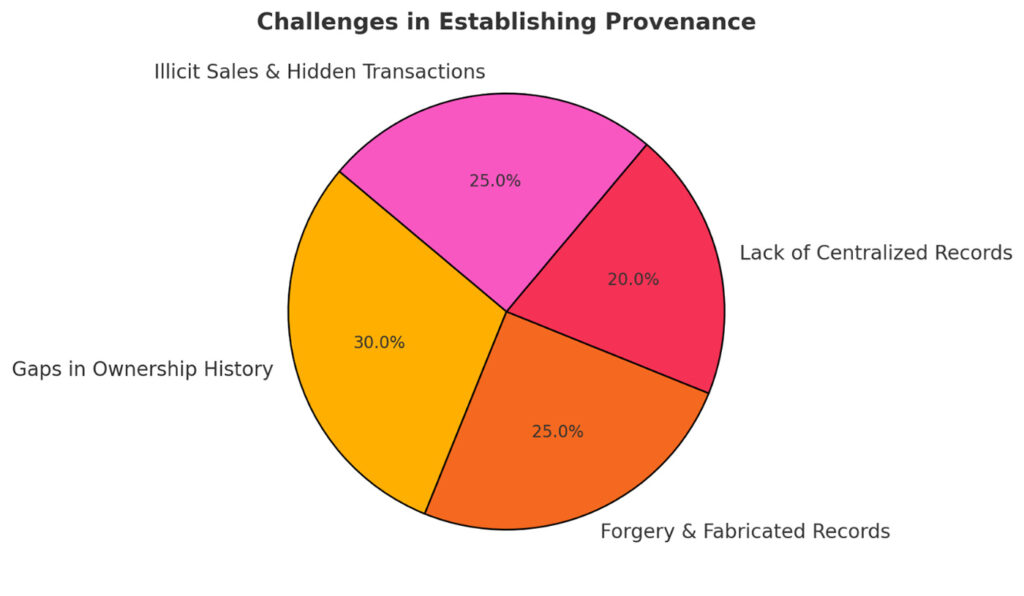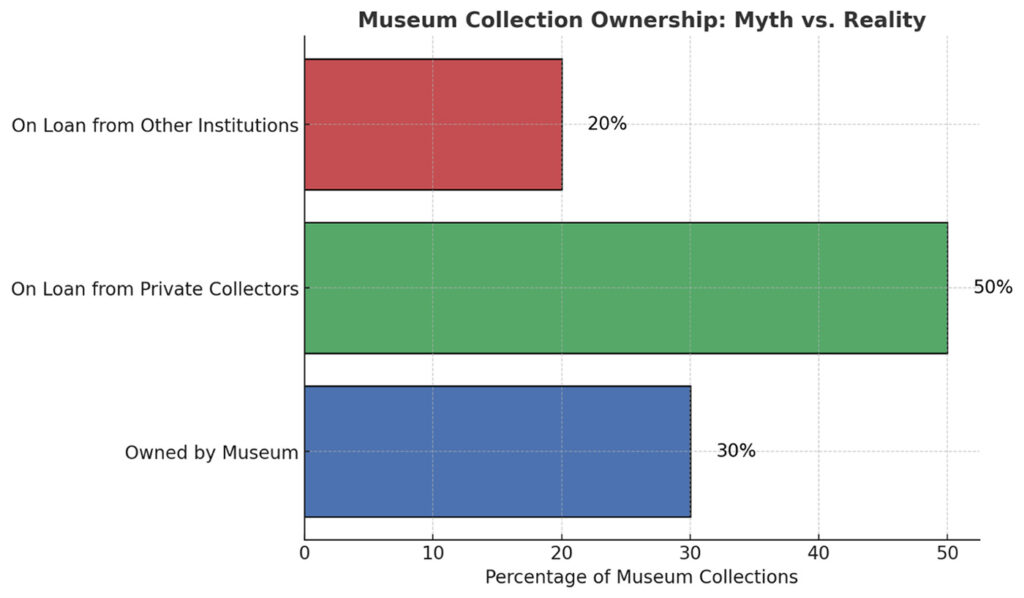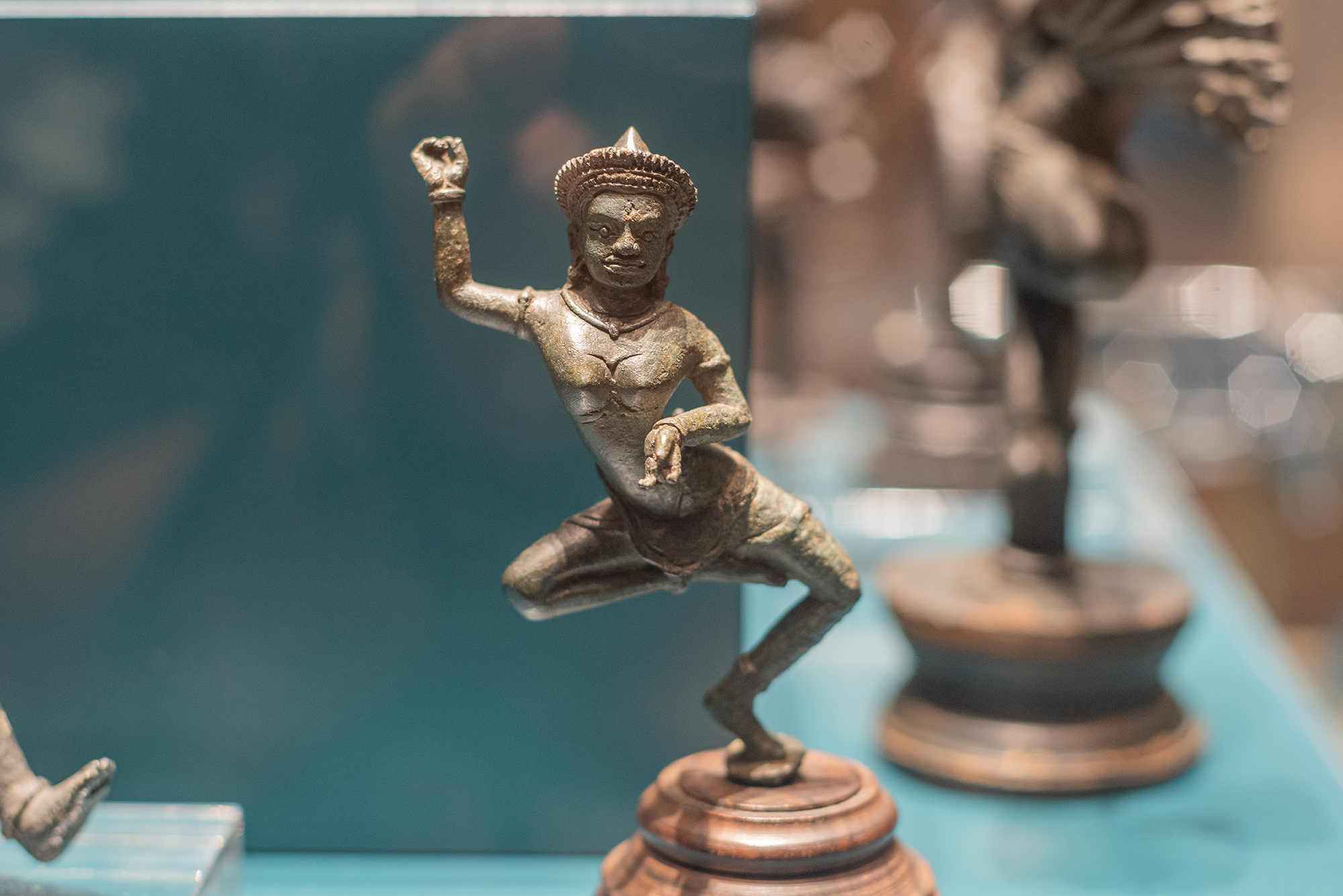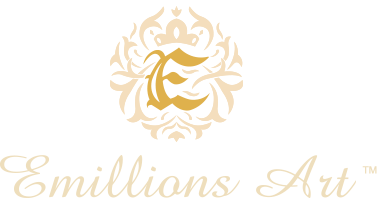In the intricate world of art collection and museum curation, provenance — the documented history of an artwork’s ownership — plays a pivotal role. It authenticates a piece and ensures its ethical acquisition and rightful ownership. Recent events have underscored the significance of meticulous provenance research and the challenges institutions face in managing their collections responsibly.
The Thai Artifacts Repatriation
In January 2025, the Thai government formally requested the return of four ancient bronze statues from the Asian Art Museum in San Francisco. These statues, depicting sacred Buddhist figures, including Buddhas and bodhisattvas, were determined to have been illegally removed from Thai temples and heritage sites. Their repatriation request stemmed from growing international scrutiny over the ethical responsibilities of museums in holding objects with questionable or incomplete provenance.
This case highlights a broader issue: the presence of looted or illicitly acquired artifacts in major museum collections. While many institutions strive to adhere to ethical guidelines in acquisitions, historical transactions have often been fraught with opaque documentation, inconsistent record-keeping, and, at times, outright disregard for an artifact’s rightful origins.
The Thai artifacts in question were initially acquired during a time when the global art trade was less regulated, and provenance verification was not as rigorous as it is today. However, as new evidence and research surfaced, it became clear that these pieces were part of a larger pattern of cultural heritage theft that had persisted for decades.
The Asian Art Museum’s acknowledgment of these looted objects in its collection underscores the complexities surrounding provenance and the importance of due diligence in acquisitions. The museum faced significant public and diplomatic pressure to act in good faith, reflecting a broader shift in the museum world toward transparency and restitution.
This case is not unique. Similar repatriation efforts have gained momentum worldwide, driven by countries reclaiming their cultural heritage, strengthening legal frameworks against illicit art trafficking, and increasing advocacy from scholars, activists, and the public. The ongoing debate over rightful ownership, museum stewardship, and the moral implications of housing disputed artifacts continues to shape policies on how institutions acquire, research, and, when necessary, return cultural treasures.
For collectors and institutions alike, this serves as a crucial reminder: provenance is more than just a historical record; it’s a moral and legal responsibility that must be upheld to ensure ethical stewardship of the world’s artistic and cultural legacy.
The Importance of Provenance in Art Collection
Provenance, the documented history of an artwork’s ownership, is a critical component of collecting, curating, and valuing art. More than just a paper trail, provenance provides essential insights into an artwork’s authenticity, legal status, and historical significance. Without a well-documented record of ownership, a piece can fall into legal limbo, raise ethical concerns, or even lose its market value entirely.
Why Provenance Matters
A complete and verifiable provenance is one of the strongest indicators of an artwork’s authenticity. By tracing a piece’s ownership history, collectors, scholars, and museums can confirm that the artwork is genuine and not a forgery or misattribution. Many artists, especially those from earlier periods, did not sign or document their work in ways that are easy to verify today. In such cases, provenance research, including historical documentation, letters of sale, and exhibition records, is vital in establishing a piece’s legitimacy.
Provenance research has played a key role in confirming the authenticity of masterpieces that were previously thought to be lost or misidentified. For instance, the rediscovery of Leonardo da Vinci’s Salvator Mundi hinged on an exhaustive provenance investigation that linked the painting’s lineage to 16th-century royal collections.
Legal Ownership and Repatriation Issues
Beyond verifying authenticity, provenance also determines an artwork’s legal ownership. If there are gaps in an artwork’s history, especially around periods of war, colonization, or illicit trade, it could indicate potential legal disputes.
Many high-profile restitution cases have involved artworks with murky provenance, particularly those looted during World War II. Nazi-looted art remains a significant issue in museums and private collections today. Institutions worldwide have undertaken provenance research initiatives to identify works that may have been stolen from Jewish families and others who lost their cultural heritage during the war.
More recently, the looting of archaeological sites in conflict zones, such as Iraq and Syria, has led to a surge in illicit antiquities entering the art market. Countries and legal authorities are increasingly working to trace these artifacts and return them to their places of origin. Without proper provenance, buyers and collectors may unknowingly acquire stolen or looted works, putting themselves at risk of legal action and reputational damage.
Market Value and Investment Protection
A strong provenance safeguards an artwork’s legitimacy and ownership and significantly enhances its market value. Art collectors and investors prioritize pieces with clear historical documentation, as these works come with lower risk and higher demand.
For high-value pieces, provenance can mean the =difference between a record-breaking sale and a piece languishing in uncertainty. Works with prestigious ownership history, such as those once part of a royal collection, prominent museums, or famous collectors, often command premium prices at auction. In contrast, artworks with incomplete or dubious provenance may be deemed unsellable or heavily discounted due to the risk of future ownership disputes.
The Challenges of Establishing Provenance
Despite its importance, establishing provenance is not always straightforward. Many artworks have incomplete or lost documentation, particularly older pieces that have changed hands multiple times. Some of the biggest challenges in provenance research include:
- Gaps in Ownership History — Many artworks have missing records, making it difficult to verify whether they are acquired legally.
- Forgery and Fabricated Provenance — In some cases, fraudulent documentation is created to misrepresent an artwork’s history, misleading buyers and institutions.
- Lack of Centralized Records — Unlike real estate or automobiles, artworks do not have a universal registration system, making tracking ownership across centuries complex.
- Illicit Sales and Private Transactions — Many sales occur privately, outside of the public eye, leaving gaps in provenance records that can be exploited by bad actors.
Given these challenges, art collectors, museums, and investors must exercise due diligence. Working with experts in provenance research, legal teams, and reputable dealers can help mitigate risks and ensure ethical stewardship of cultural and artistic heritage.

Museum Collections — Ownership and Loans
Contrary to popular belief, many artifacts displayed in museums are not owned by the institutions themselves. Instead, they are often on long-term or permanent loan from private collectors or other entities. This practice allows museums to showcase diverse artworks without the financial burden of ownership.
However, this system presents its own set of challenges.
Indefinite Loans: Items on indefinite loan can lead to complications, especially if ownership is disputed or if the lender wishes to reclaim the piece. Such situations can result in legal battles or the sudden loss of key exhibits.
Deaccessioning: Museums may choose to deaccession or remove items from their collections. This process is often undertaken to refine collections, manage resources, or repatriate artifacts to their countries of origin. Deaccessioning must be handled ethically, with transparency, and adherence to legal standards.

The Ethical Implications of Art Sales
Artworks owned by museums are considered assets. While not typically intended for sale, financial pressures or strategic decisions can lead institutions to sell pieces from their collections. Such sales can be controversial, raising questions about the museum’s role in preserving cultural heritage versus addressing financial needs.
For instance, if a wealthy individual offers a substantial sum for a particular piece, a museum facing financial difficulties might consider the sale. While this can provide immediate financial relief, it may also lead to public outcry, especially if the artwork holds significant cultural or historical value.
Emillions Art — Expertise in Collection Management and Provenance Research
At Emillions Art, we specialize in assisting collectors and institutions in navigating the complexities of art ownership. Our services include:
- Collection Management — We offer tailored solutions for managing art collections, ensuring proper documentation, storage, and conservation.
- Provenance Research — Our team conducts thorough provenance research to authenticate artworks and establish clear ownership histories, mitigating potential legal and ethical issues.
- Advisory Services — We guide acquisitions, deaccessioning, and ethical considerations, helping clients make informed decisions that align with best practices in the art world.
By prioritizing meticulous research and ethical standards, we aim to uphold the integrity of art collections and support the responsible stewardship of cultural heritage.
The realm of art collection and museum curation is fraught with complexities, particularly concerning provenance and ownership. Recent cases, such as the repatriation of Thai artifacts, underscores the necessity for rigorous provenance research and ethical collection management. Whether you are a private collector or a museum professional, understanding these intricacies is crucial for the responsible stewardship of art and artifacts.
At Emillions Art, we are committed to guiding our clients through these challenges, ensuring that every piece of art is not only cherished but also ethically and legally sound. Contact Emillions Art today to evaluate your collection.
Read the full article about the repatriation of Thai artifacts.




